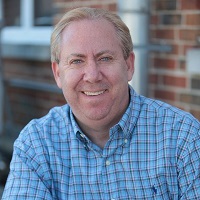According to the recent nurse.com article, the American Association of Nurse Practitioners released data Jan. 21 showing the number of NPs licensed in the U.S. has nearly doubled over the past 10 years, rising from about 106,000 in 2004 to 205,000 as of Dec. 31, 2014. AANP data also showed that more than 15,000 men and women graduated from NP programs during the 2012-2013 academic year.
The news closely follows the U.S. News & World Report ranking of nurse practitioners as the second best overall job of 2015, the 50th year of the NP profession.
“The explosive growth of the nurse practitioner profession is a public health boon considering our nation’s skyrocketing demand for high-quality, accessible care,” AANP president Ken Miller, PhD, RN, CFNP, FAAN, FAANP, said in the AANP announcement. “The challenge now will be right-sizing state and federal laws such that all patients will have full and direct access to nurse practitioners, and these expert and dedicated clinicians will be able to provide care to the top of their education and clinical training.”
Nurse practitioners serve as primary and acute care providers across the country. They assess, order, perform and interpret diagnostic and laboratory tests; make diagnoses; initiate and manage treatment; prescribe medications and non-pharmacologic treatments; and counsel patients, their families and communities. More than 50 years of peer-reviewed, independent research has shown NPs to be safe and cost-effective clinicians, with patient outcomes similar and sometimes better than those of physicians, according to the AANP news release.
“All across the country, nurse practitioners are serving as a lifeline for patients, many who would otherwise struggle to access care,” David Hebert, chief executive officer of AANP, said. “It is our hope that these patients, as well as their families, employers and legislators, will join us in recognizing and honoring the national nurse practitioner community throughout this milestone 50th anniversary year.”
The AANP is the largest professional membership organization for NPs of all specialties. It represents the interests of more than 205,000 NPs, including approximately 56,000 individual members and 200 organizations, providing a unified networking platform and advocating for their role as providers of high-quality, cost-effective, comprehensive, patient-centered and personalized healthcare. The organization provides legislative leadership at the local, state and national levels, advancing health policy; promoting excellence in practice, education and research; and establishing standards that best serve NP patients and other health care consumers, according to the organization.
